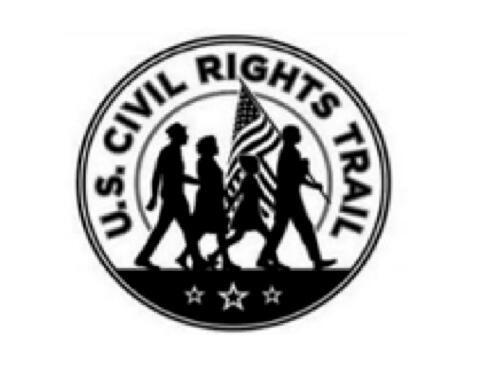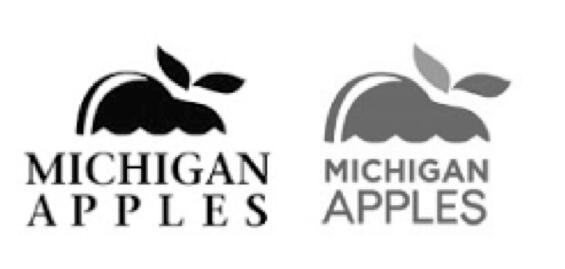Ttab Decisions and Developments
| Jurisdiction | United States,Federal |
| Author | Jane Shay Wald |
| Publication year | 2020 |
| Citation | Vol. 45 No. 3 |
Jane Shay Wald
Irell & Manella LLP
Can't Register A Flag Design
It Does No Good To Be Denyin'
The Flag's The Thing One Cannot Miss
Accuse The Board? Forget That Diss!
The Board upheld the Examining Attorney's refusal to register Applicant's mark, depicted here for "Advertising and marketing services, namely, promoting travel and tourism related to historical information on civil rights in the United States."

The basis for the refusal was Section 2(b) of the Trademark Act, 15 USC Sec. 1052(b), that prohibits registration, on either the Principal or Supplemental Register, of a mark that '[c]onsists of or comprises the flag or coat of arms or other insignia of the United States, or of any state or municipality, or of any foreign nation, or any simulation thereof." The Board noted that "there is very little case law discussing the registrability of a mark that 'consists of or comprises the flag...of the United States." The Board relied on its most recent precedential decision under Sec. 2(b), clarifying that "refusal is appropriate 'if the design would be perceived by the public as a flag, regardless of whether other matter appears with or on the flag.'" In re Family Emergency Room, 121 USPQ2d 179 (TTAB 2017).
The Board in Family Emergency Room cited the Sec. 2(b) examination guidelines in the Trademark Manual of Examining Procedure ("TMEP") which the Board stated were "'appropriate under the statute.'" While the TMEP does not have the force of law, it sets forth the guidelines and procedures the Examining Attorneys follow.
The TMEP provides examples of situations where consumers would not perceive a design as a flag, so that Sec. 2(b) wouldn't apply. TMEP Sec. 1204.01(b) provides that "marks containing elements of flags in a stylized or incomplete form are not refused under Sec. 2(b)." Nor does the "mere presence of some significant elements of flags, such as stars and stripes (U.S. flag)" necessarily result in a Sec. 2(b) refusal.
The TMEP Sec. 1204.01(b) lists examples of flag designs that would not trigger a Sec. 2(b) refusal. These are:
- The flag design is used to form a letter, number, or design.
- The flag is substantially obscured by words or designs.
- The design is not in a shape normally seen in flags.
- The flag design appears in a color different from that normally used in the national flag.
- A significant feature is missing or changed.
Applicant urged that these exceptions applied to the design depicted above. It argued that its flag is missing significant features of the U.S. flag, forms another design, is substantially obscured by other designs, and isn't in the rectangular shape "normally seen in the U.S. flag." The Board was not persuaded. It found the public would perceive the Applicant's flag design to be a simulation of the American flag, despite not being a literal copy of it. Applicant's insistence that the American flag is understood as a rectangle carried no weight. The record included numerous images, including photographs, of a flag on a pole or stick in the aspect shown in the Applicant's mark.
The Board found Applicant's flag design was not substantially obscured by words or designs, despite Applicant's arguments. While "portions of some of the stripes...disappear behind the silhouettes of two of the walking adults," the flag as a whole remains "clearly visible, and the flag is immediately recognizable as such."
The Examining Attorney did not believe the "different color" analysis applied, as no color was claimed, and thus omitted any discussion of color. The Board, in a footnote, disagreed. Because Applicant did not claim color as a feature of the mark, its mark was not limited to particular colors. It could cover all different colors in which it may appear. In re Data Packaging Corp., 453 F.2d 1300 (CCPA 1972). This further weighed against the Applicant, as it could not be said as a matter of law that the design appears in a different color from the American flag's red, white and blue.
[Page 28]
The Board discussed the 30 some third-party registered marks containing elements of the American flag, Applicant introduced to argue that "'stylized marks with designs that include flags are generally not refused registration under Sec. 2(b).'" The Board distinguished a number of these in the Opinion, explaining how they cited registered marks fell within the TMEP exceptions, while the Applicant's mark did not.
Applicant itself acknowledged that "'[t]he Board and courts are not bound by prior registrations for analogous marks.'" Nonetheless, Applicant made an unusual and unwelcome challenge, expressing suspicion as to the Examining Attorney's motivation in refusing registration, to which the Board responded:
"These arguments, particularly Applicant's accusation that the Examining Attorney's 'refusal to address this need for consistent treatment at the Trademark Office is surely not an oversight as indeed, it would be impossible for the Examining Attorney to reconcile his decision to deny registrations here with the decision to register or allow these other marks'...are misplaced. The Examining Attorney's obligation was to determine the registrability of the applied-for mark under Sec. 2(b) based on the appearance of the flag design in Applicant's mark and a comparison of that design to the American Flag.... He properly determined that the mark was unregistable under the statute, and neither he nor we have any obligation 'to reconcile his decision to deny registration here with the decision to register or allow...other marks.'" (Emphasis added).
The Board observed, moreover, that "Applicant's evidentiary submission almost certainly presents an incomplete picture of USPTO practice, as it omits marks in applications that were refused registration under Sec. 2 (b) in a manner likely to be highly consistent with the action in this case."
It further stated: "The Board recently reiterated that '[w]hile we recognize that "consistency is highly desirable," consistency in examination is not itself a substantive rule of trademark law, and a desire for consistency with the decisions of prior examining attorneys must yield to proper determinations under the Trademark Act and rules.'" (Citations omitted here). In re Alabama Tourism Department, Ser. No. 87599292 (TTAB 5/6/20).
Certification Marks For Places?
Different Rules Apply
These Are Interesting Cases
Read This One And You'll See Why
Board affirmed the Examining Attorney's refusal to register the word mark REAL MICHIGAN ("MICHIGAN" disclaimed) for "wine; hard cider," in Class 33, citing a likelihood of confusion under Sec. 2(d), with the below-depicted registered certification marks.

Both of the cited registered certification marks are owned by the Michigan Apple Committee, a quasi-governmental organization formed under Michigan law.
The certification statement on each registration provides:
The Certification mark, used by persons authorized by certifier, certifies that the goods bearing on the mark consist of apples grown in the state of Michigan.
The Board explained key differences between certification marks and other trademarks "A certification mark 'is a special creature created for a purpose uniquely different from that of an ordinary service mark or trademark...' In re Fla. Citrus Comm'n, 160 USPQ495, 449 (TTAB 1968)." The Board clarified that the major distinctions between certification marks and trademarks are, first, that a certification mark is not used by its owner. It is used by those the owner authorizes to use the mark. Second, a certification mark is not a source indicator and does not distinguish the goods or services of one person from those of another. Instead, it indicates that the goods or services of authorized users are "certified as to a particular aspect of the goods or services." 15 USC Secs. 1054; 1127. TMEP Sec.1306.01. "The message conveyed by a certification mark is that the goods or services have been examined, tested, inspected, or in some way checked by a person who is not their producer, using methods determined by the certifier/owner," and that the user meets those prescribed characteristics or qualifications.
The cited registrations here are geographic certification marks, also called "certification marks of regional origin." Geographic certification marks are used to certify that authorized users' goods or services originate in a specific geographic region, such as ROQUEFORT cheese from a municipality of France, and COGNAC for distilled brandy from a region in France. A geographical name does not require a secondary meaning in order to qualify for registration as a certification mark. It is a specific exemption to Trademark Act Sec. 2 (e) (2), 15 USC Sec. 1052 (e) (2), which applies only to "regular" trademarks. That section bars registration of primarily geographically descriptive marks without a showing of acquired distinctiveness (secondary meaning), under Sec. 2(f). It is not applicable to geographic certification...
To continue reading
Request your trial
